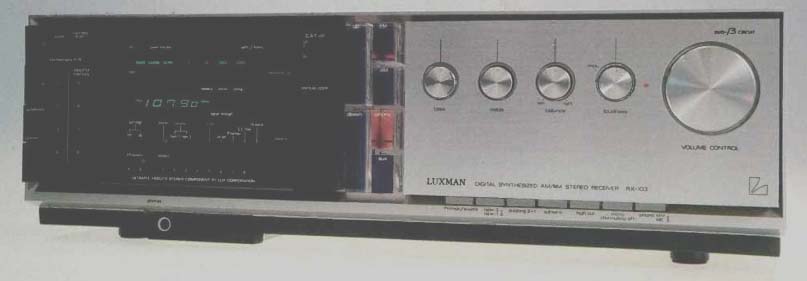
Manufacturer's Specifications
FM Tuner Section:
Usable Sensitivity: Mono. 10.3 dBf (1.8µV/300 ohms).
Fifty dB Quieting Sensitivity:
Mono, 16.4 dBf (3.611V/300 ohms).
S/N: Mono, 78 dB.
THD: Mono, 0.05% at 1 kHz, 0.06% at 100 Hz, 0.08% at 6 kHz; stereo, 0.06% at 1 kHz, 0.08% at 100 Hz, 0.10% at 6 kHz.
Capture Ratio: Wide, 1.2 dB; narrow, 3.3 dB.
Image Rejection: 70 dB.
I.F. Rejection: 100 dB.
Spurious Response Rejection: 85 dB.
AM Suppression: 65 dB.
Alternate Channel Selectivity: Wide, 60 dB; narrow, 90 dB.
Adjacent Channel Selectivity: Wide, 6 dB; narrow, 20 dB.
Stereo Separation: Wide, 55 dB at 1 kHz.
SCA Rejection: 60 dB.
AM Tuner Section:
Usable Sensitivity: Loop, 550 uV per m; external antenna, 15uV.
Image Rejection: 40 dB.
S/N: 50 dB.
THD: 0.3%.
Amplifier Section:
Power Output: 90 watts per channel, both channels driven, 8-ohm loads, 20 Hz to 20 kHz.
Rated THD: 0.018%.
Input Sensitivity: MM phono, 2.5 mV for rated output; MC phono, 150 µV for rated output; high level, 150 mV for rated output; main amplifier, 950 mV for rated output.
Phono Overload: MM, 200 mV.
S/N: MM phono, 86 dB; high level, 102 dB.
Residual Noise: 0.5 mV.
Tone Control Range: Bass, +7 to - 10 dB at 100 Hz; treble, +6 to - 10 dB at 10 kHz.
Subsonic Filter: 30 Hz, 6 dB/octave.
High-Cut Filter: 7 kHz, 6 dB/octave.
Loudness Control: Volume at -30 dB, +8 dB at 100 Hz, +7.5 dB at 10 kHz.
General Specifications
Power Consumption: 120 V, 60 Hz, 3.1 A.
Dimensions: 17.8 in. (45.3 cm) W x 5.8 in. (14.7 cm) H x 17.9 in. (45.5 cm) D.
Weight: 34.1 lbs. (15.5 kg).
Price: $995.00.
Company Address: Luxman Division, Alpine Electronics, P.O. Box 2859, Torrance, Calif. 90509.
Cosmetically, the RX-103 is a far cry from some of the earliest Luxman receivers to arrive in this country some 10 years ago when that 55-year-old company first established its own subsidiary in the United States. Those receivers were widely acclaimed for the elegance of their styling (a senior engineer and director of the Lux Corporation of Japan had the last word on product design and styling, and his sense of good taste was unerring) as well as for their excellent sonic and measured performance. Front panels were always somewhat understated and subdued, with colors carefully chosen, knobs painstakingly selected to complement the rest of the panel's accoutrements. One felt the overall appearance without was consistent with the superb electronic performance within.
Let me say at the outset that the superb performance is still very much present in this latest round of receivers, if the top-of-the-line RX-103 is any indicator of the rest of the line.
As for the styling, well, I'm sure there are those who will love the RX-103's clear lucite-block pushbutton selectors, flashing LED indicators (which abound and, in actual use, do perform useful functions), its busy arrays of rotary knobs and pushbuttons, and its four-tone color scheme (more, if you count the colors of the various indicator lights). I suspect that there are some who will even love "Servo-Face." What is Servo-Face, you ask? It is Luxman's name for its futuristic motor-driven section of the front panel. With power off, the right half of the panel rests flush with the front surfaces of the rotary bass, treble, balance, loudness and master volume controls, at the same time covering up seven small pushbuttons which handle secondary functions of tape monitor selection (there are two circuits here), tape dubbing, subsonic and high-cut filter activation, mono/FM muting, and MM/MC cartridge input selection.
Push the power switch at the lower left of the panel and the gentle whirring of a motor is heard, as the Servo-Face section of the panel recedes so that you can get at the aforementioned knobs and buttons. I am informed that the "practical" purpose of Servo-Face (I just love that name, don't you?) is to prevent idle fingers from upsetting preferred control settings when the master of the system is not present. If that is so, it would seem to me to be more important that Servo-Face operate in just the reverse way blocking access to the knobs when the receiver is turned on and working. As I said, you will either love it or think it a bit silly, but it should in no way detract .from an appreciation of the excellent audio and r.f. engineering which has gone into the RX-103.
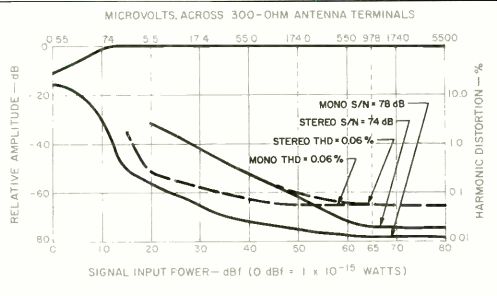
Fig. 1-Mono and stereo quieting and distortion characteristics, FM section.
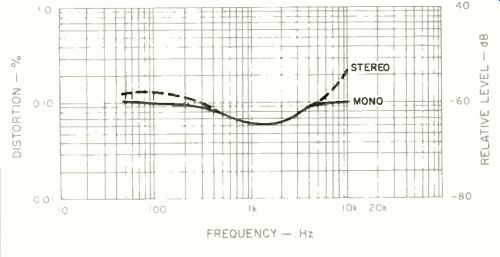
Fig. 2-TH D vs. frequency, FM tuner section.
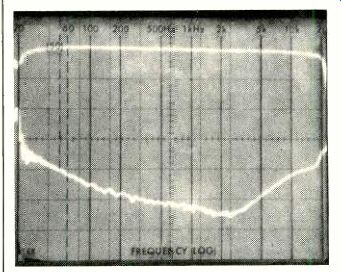
Fig. 3-Frequency response (upper trace) and stereo separation (lower trace).
FM tuner section.
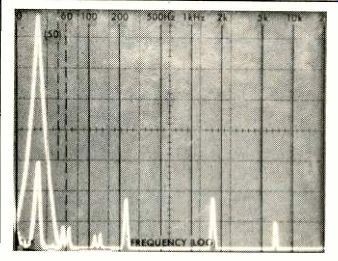
Fig. 4-Spectrum analysis of crosstalk products for a 5-kHz, left-only signal,
FM tuner section.
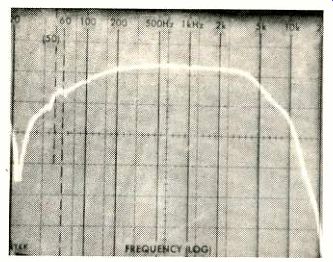
Fig. 5-Frequency response, AM tuner section.
To the left of the Servo-Face section of The panel are several transparent lucite blocks which serve as program source selector buttons (FM, AM, Phono and AUX) and as "Up" and "Down" AM or FM tuning buttons for the frequency-synthesized tuner. When a given program selector but ton is pushed, subdued red lighting is emitted from behind that button and is visible in front of the button. Blocks at the extreme left end of the panel serve as the power on/off switch and as speaker selector switches (one or two pairs of speakers can be connected to the RX-103). Just to the right of these are "Store," "Memory Scan," and eight preset station buttons, plus a button labeled "FM Memory A/B." With the aid of this last-named button, it is possible to store up to 16 favorite FM stations, since stations can be memorized as A1, A2, etc. or B1, B2, etc. depending upon the setting of the NB switch when a given station frequency is placed into memory. When AM reception is selected, how ever, only eight favorite station frequencies can be stored since the NB switch is not active in the AM tuning mode.
Most of the remainder of the front panel is devoted to forms of display, including a fluorescent power output level display, preset station indicators, numeric frequency display (in MHz for FM or kHz for AM), signal strength indicator, FM tuning indicator (which lights up when optimum tuning has been achieved), and a stereo indicator. In addition, there are several tiny red LED indicators which light up to tell you what Luxman's automatic Computer Analyzed Tuning (C.A.T., for short) is doing. This circuit adjusts such tuner parameters as i.f. bandwidth (narrow and wide set tings are not user selectable, but are adjusted according to reception conditions "sensed" by the tuner), antenna attenuator, high-blend circuit, and an anti-"birdie" filter. Any or all of these may be turned on automatically, and if they are, associated LEDs in the display area tell you so. Of course, if you don't agree with C.A.T.'s decisions you always have the option of depressing a C.A.T. on/off button located to the right of the display area. A headphone jack and a remote control on/off switch complete the front panel layout.
A hand-held infrared remote control unit supplied with the RX-103 enables you to operate many of the receiver's functions remotely (power on/off, volume, muting, input selection, memory scanning, FM NB selection and tape monitor switching). And if you happen to own Luxman's matching turntable (PX-101) and matching cassette deck (their KX 102 or KX-101), multiconductor cables provided with those components connect to special sockets on the rear panel of the RX-103, enabling you to operate most of the controls on these other components from the same remote, too.
Coaxial as well as screw-terminal 75-ohm antenna connection facilities, plus 300-ohm and external AM antenna terminals are grouped together at the upper left of the rear panel. A true AM loop antenna is supplied separately and snaps into a bracket on the rear panel, and it can be oriented for best AM reception. In addition to the usual array of phono- and high-level input and tape input and output jacks, the rear panel of the receiver is equipped with pairs of "Preamplifier Output" and "Main Amplifier" input jacks, plus a switch to connect and disconnect these two sections of the receiver to plug sound processors into the signal path.
Two sets of color-coded speaker connection terminals, four convenience a.c. receptacles, and a chassis ground terminal complete the rear panel layout.
Circuit Highlights Neither the owner's manual nor the press releases issued by Alpine, who have the American distributing rights for Luxman products, tells us very much about the circuitry of the RX-103 receiver. We do know that the amplifier section uses Luxman's well-known "Duo Beta" circuit which provides minimum overall loop feedback in the audio range but adds a second subsonic feedback loop to reduce output impedance at near-d.c. frequencies and reduce various forms of dynamic intermodulation distortion, in addition to stabilizing the output stages against d.c. drift. Having explored this circuit in earlier amplifiers, I can tell you that it is a valid and effective approach to audio power amplifier design, one that has been emulated by several other firms who specialize in superb-sounding high-end amplifiers.
The tuner section employs frequency-synthesized tuning, of course, with the added attraction of that innovative C.A.T. circuit that takes the guesswork out of optimum FM tuning.
FM Measurements
Usable FM sensitivity in mono measured 10.8 dBf (1.9 µV across 300 ohms), while stereo usable sensitivity was 18 dBf (4.4 µV/300), just a bit above the ideally set stereo switching threshold of 17 dBf. Fifty-dB quieting in mono required an input signal strength of only 14.7 dBf (3.0 µV/ 300 ohms), while in stereo, the 50-dB quieting level was reached with an input signal of 37.2 dBf (40 µV). At 65-dBf signal level, signal-to-noise ratio in mono was 78 dB, exactly as specified by Luxman, while at the same signal strength input in stereo, S/N measured 74 dB. Harmonic distortion, for a 1-kHz modulating signal, measured 0.06% in both mono and stereo. Distortion and quieting for both mono and stereo reception are plotted as a function of signal input levels in Fig. 1, while in Fig. 2 I have plotted harmonic distortion versus audio frequency (for strong signal levels) for both mono and stereo. At 100 Hz, THD was 0.1% in mono and 0.13% in stereo, while at 6 kHz, distortion was 0.1% in mono and 0.11% in stereo.
Figure 3 is a 'scope photo taken from my spectrum analyzer. Sweeps are logarithmic from 20 Hz to 20 kHz. The upper trace shows stereo FM frequency response for the FM tuner section of the Luxman RX-103; deviation from flat response was no more than +0.3 dB or -0.4 dB at any frequency from 30 Hz to 15 kHz. The lower trace shows crosstalk or separation as measured at the output of the unmodulated channel. Separation measured an outstandingly high 58 dB on one channel and 61 dB on the other at 1 kHz. At 100 Hz, the separation readings were 47 and 48 dB, while at 10 kHz, separation was still a very high 39 dB for each channel.
Figure 4 illustrates what happened when I applied a 5-kHz modulating signal to the left channel. The tall spike at the left of the 'scope display is the desired output signal.
Sweep was linear this time, extending from 0 Hz to 50 kHz.
The second sweep shows what was present at the output of the unmodulated channel. Separation is indicated by the shorter spike nestled inside the desired output indication, and amounts to around 46 dB at that frequency ('scope vertical sensitivity is 10 dB per division). Other crosstalk components, seen to the right of the display, consist of the 5-kHz modulating signal, small amounts of 19- and 38-kHz outputs, and one or two other spurious crosstalk signals.
Because of the automatic action of Luxman's C.A.T. circuitry, it was not possible to "force" the tuner into its narrow i.f. mode on the test bench. Therefore, we were only able to measure remaining i.f.-bandwidth-dependent parameters in the normal or "wide" position. Under those conditions, cap ture ratio measured an excellent 1.1 dB, while alternate-channel selectivity was 63 dB. Image rejection measured 73 dB while i.f. and spurious rejection measured 100 and 88 dB respectively. Figure 5 is the usual frequency response curve for the AM tuner section of the receiver. If you are willing to tolerate a "-± 6 dB" notation (the way most manufacturers quote AM frequency response, if they quote it at all), the response of this AM section is really not all that bad, extending as it does from around 65 Hz to between 5 and 6 kHz.
Power Amplifier and Preamplifier Measurements
The power amplifier section of the Luxman RX-103 delivered a full 100 watts per channel at mid-frequencies before THD reached the rated level of 0.018%. The reason for Luxman's 90-watt rating was obviously the power limits at 20 Hz and 20 kHz, which turned out to be exactly 90 watts, as claimed. Dynamic headroom was rather high for a receiver in this power class, measuring a full 1.7 dB. Translated to music power terms, this means that the amplifier can deliver short-term signal peaks of 133 watts per channel without clipping. Figure 6 is a plot of THD versus power output for the three key test frequencies of 20 Hz, 1 kHz, and 20 kHz.
Damping factor for the power amplifier measured 47, referred to 50 Hz and 8-ohm loads. Considering the low amount of overall feedback employed in the Duo-Beta circuitry, I was impressed with the receiver's relatively low output impedance, as indicated by such a high damping factor. The amplifier operated safely into 2-ohm loads, and it was stable under a wide variety of capacitive and inductive loading conditions. CCIF-IM (twin tone) distortion measured 0.0027% at rated output, while IHF-IM was lower than 0.01%, the lowest that I am able to observe on my spectrum analyzer.
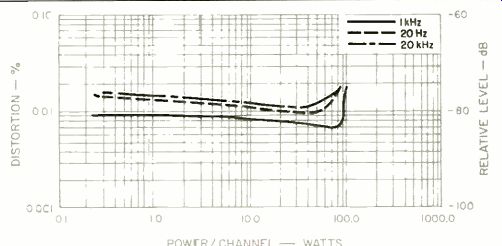
Fig. 6-Power output per channel vs. THD.
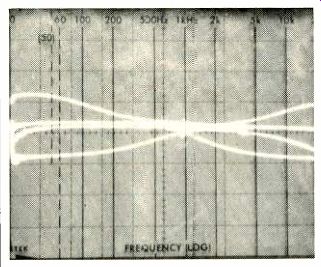
Fig. 7-Tone control and filter characteristics.
Figure 7 is a 'scope photo of multiple sweeps taken with my spectrum analyzer, showing bass and treble action as well as the characteristics of the low-cut and high-cut filters.
The bass and treble control action is rather unusual in that when bass and treble boost are employed, midrange frequency response is left relatively unaltered, whereas when bass or treble cut is introduced, the turnover point seems to shift more towards the mid-frequencies. In later listening tests, I discovered this arrangement is more effective than the usual fixed-pivot-point tone control designs.
Input sensitivity measured 0.25 mV for the MM phono inputs, 0.015 mV for the MC phono inputs, and 18 mV for the high-level (AUX and tape) inputs. Measurements are referred to 1-watt output. RIAA equalization was accurate to within 0.3 dB, with most of the deviation occurring on the plus side. Frequency response through the high-level inputs was flat within 1 dB from 10 Hz to 24 kHz, within 3 dB from 5 Hz to 50 kHz.
Signal-to-noise ratio for the moving-magnet phono inputs measured 77 dB, referred to 1-watt output, with a 5-mV input at 1 kHz. In the moving-coil setting of the selector switch, with input reference level reduced to 0.5 mV, signal to-noise was still a very satisfactory 72 dB. With a 0.5-V signal applied to the high-level inputs and output adjusted (by means of the master volume control) to 1-watt output, signal-to-noise measured 79 dB, while residual noise with volume control turned fully counterclockwise was 83 dB below 1 watt. Expressed in voltage terms across 8 ohms, that works out to be 0.2 mV, or 8 dB better than claimed by Luxman. Phono overload was a very high 230 mV for the moving-magnet phono inputs and a more-than-adequate 26 mV for the moving-coil inputs.
Use and Listening Tests
It was obvious from the first moment that I turned on the RX-103 for listening tests that the Luxman engineers had not lost their touch-or their sense of what constitutes good sound in an all-in-one receiver. Where I live, at least, having all that station storage capacity is very welcome, since there are actually more than eight FM stations that I want to be able to recall easily (not because that many broadcast a high-quality, high-fidelity signal, but because I sometimes want to hear their programming). I hooked up my regular turntable as well as my own Compact Disc player (via the AUX inputs) and listened to a variety of program material.
Although my reference speakers are not very efficient, the relatively high power of the Luxman receiver, plus its high dynamic headroom, provided adequate sound levels even with CDs having very wide dynamic range. The fluorescent power output meters are a worthwhile enhancement to the receiver, especially under circumstances such as mine, where I was running the receiver at peak output levels very close to clipping.
Conventional records were reproduced flawlessly with the Luxman RX-103, too, though I must confess that I'm getting a bit spoiled by Compact Discs these days. I therefore don't spend as much time listening to vinyl LPs as I used to when evaluating new equipment.
Perhaps the most outstanding portion of the receiver is the FM tuner section. Not that the measured numbers are the best I have ever seen in a tuner or a receiver, far from it.
What's nice about this tuner section is that it really "knows" how best to handle any incoming signals without the user having to worry about which settings will be best under a given set of reception conditions. To some inveterate knob twirlers, this may seem a negative feature, but to the music lover who simply wants the best possible FM reception under a given set of conditions, the RX-103's C.A.T. feature will be much appreciated.
I have seen the RX-103 at audio dealers' showrooms hooked up to a Luxman turntable and cassette deck in what constitutes one of the most sophisticated one-brand systems imaginable. It's under those conditions that the hand held remote control unit really comes into its own. But even when used with the receiver alone, the remote unit adds a touch of luxury to the installation. The surprising thing is that, to the best of my knowledge, Luxman is the only company that has attempted to incorporate one of the few positive advantages of one-brand systems, such as wireless remote control, into a top-quality component, thereby giving us the best of both worlds. Yes, I liked the Luxman RX-103 very much, and, after a while, I even learned to ignore Servo-Face entirely; the receiver has so many other good things going for it.
-- Leonard Feldman
(Source: Audio magazine, Sept. 1983)
Also see:
Harman/ Kardon T60 Turntable (Jan. 1983)
Luxman LV-109 Integrated Amplifier (Sept. 1987)
Luxman PD-375 Turntable (Equipment Profile, July 1982)
Visonik Model DD-8200 Turntable (May 1979)
= = = =